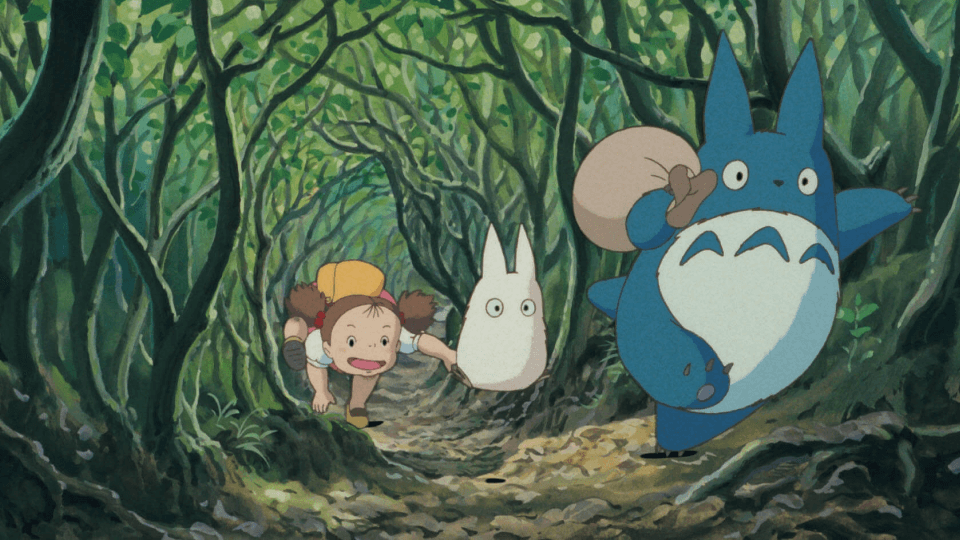Right now, you are sitting in one of two camps – either you have no idea what Studio Ghibli is, or you are borderline obsessed with the output of the widely acclaimed Japanese animation house.
OK, this is slightly hyperbolic, we’ll give you that. But only slightly. Even if you have never heard the name Studio Ghibli, you would need to have been living under a pretty sizable rock if titles like Spirited Away, Princess Mononoke, and Howl’s Moving Castle fail to ring any bells. Of the 25 highest-grossing films of all time in Japan, five are Studio Ghibli productions, with three in the top ten. The studio also has an Oscar under its belt for Best Animated Feature, and a prestigious Golden Bear award.
Jumpstart your ideas with Linearity Curve
Take your designs to the next level.
What is especially interesting is that when Studio Ghibli was first established, animation was not the crowd-pulling phenomenon it is today. In fact, by some accounts animation was actually looked down on by the mainstream film industry. This makes the success the studio achieved and the accolades it received all the more impressive, so let’s dive in and see how the studio got there.

Studio Ghibli’s origins
Studio Ghibli was founded in 1985 by directors Hayao Miyazaki and Isao Takahata and producer Toshio Suzuki, but Miyazaki and Takahata have a relationship that far predates this.
The pair first worked together in 1964, marking the beginning of a collaborative relationship that would carry on throughout their careers. They had both worked on numerous Japanese movies and television shows up until 1984, when Nausicaä of the Valley of the Wind, the first original feature film that Hayao Miyazaki directed, became both a box office and critical success.
While Nausicaä isn’t an actual Studio Ghibli production, it is unmistakably Miyazaki and displays some of the hallmarks that partly define his style. It conveys a strong pro-environmental message and has a heroine at the center of the story, both things that he comes back to throughout his future films.
Toshio Suzuki was part of the production team on Nausicaä. Buoyed by the film’s performance, Miyazaki and Suzuki decided to set up their own studio and invited Takahata to join them. Tokuma-Shoten, the Tokyo-based publishing company, provided the necessary funding to found Studio Ghibli, and so a journey was started that would result in 21 feature films and a reputation as one of the world’s best animation studios. Putting it like this makes it sound like it was a straight line to success, but it wasn’t quite that straightforward.

But just who or what is a Ghibli?
The name Ghibli was chosen by Miyazaki.
The word ghibli’s root is Italian and it’s based on the Libyan term for ‘hot desert wind’, with the concept being that the new studio was going blow a new wind through the animation industry. A name with this meaning might have seemed a tad lofty and ambitious, yet it wasn’t long before the studio was making good on its promise, shaking up not only the world of animation but also the wider film industry.
The studio’s first film, Laputa: Castle in the Sky, was released in 1986 and went on to become Japan’s highest-grossing animation film that year. It included some familiar motifs that are definitive of Miyazaki’s style, such as his obsession with the mechanics of flight and a penchant for magical realism. His father was an aeronautical engineer who ran the family business, Miyazaki airlines. This influence permeates so much of the younger Miyazaki’s output, and Laputa is one of the clearest examples. Much of the film’s action takes place in the air, with airships and flying devices featuring heavily.
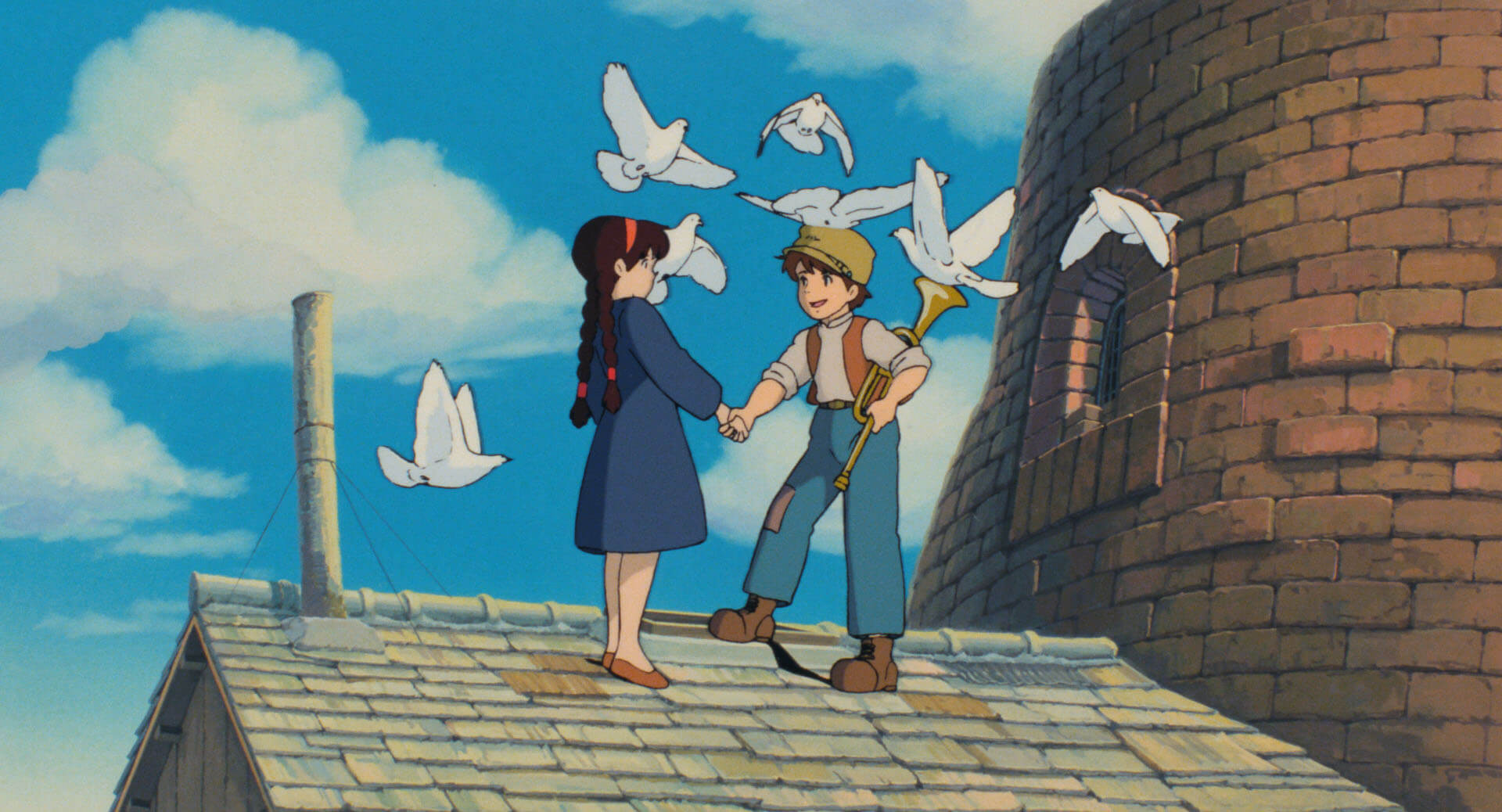
From commercial flop to cult classic
In 1988, Studio Ghibli followed up Laputa: Castle in the Sky by releasing two films simultaneously—the Takahata-directed Grave of the Fireflies and Miyazaki’s My Neighbor Totoro.
This simultaneous release was needed to boost the studio’s financial status, but on its release, My Neighbor Totoro was something of a commercial flop. Luckily, the film’s merchandise sold well. More interestingly, My Neighbor Totoro went on to become a cult classic and is now regarded as one of the studio’s most beloved films. The main character, Totoro, is even featured on the Studio Ghibli logo.
The next year heralded something of a breakthrough for the studio. After acquiring the rights for a film adaptation of the novel Kiki's Delivery Service the movie went through a challenging production process before being released in July 1989. The hand-painted scenery of Kiki's Delivery Service is a joy to behold, and like many of Studio Ghibli’s movies, it features a strong female as the lead protagonist in a coming-of-age story. It was a runaway success and became Japan’s highest-grossing movie of 1989.

Going global
For the guts of the next decade, Studio Ghibli continued to produce successful animated films, such as Porco Rosso and Whisper of the Heart, but their popularity remained largely confined to Japan.
Princess Mononoke changed that. Set in the late Muromachi period, the film once again revisited Miyazaki’s recurrent theme of the environment. It examined the tension that is experienced between humanity’s need for growth and nature’s need for preservation, as well as exploring other themes such as disability and sexuality. Tackling these large themes in films that are also accessible by children is a hallmark of Studio Ghibli and something that sets the animation house apart from much of the industry.
Embark on a Journey into Computer Animation
Uncover the fascinating world of computer animation. Learn about its evolution, techniques, and how it's shaping the future of storytelling.
Miyazaki also incorporated new production techniques on Princess Mononoke, utilizing computer animation, 3D rendering, texture mapping, and digital composition. The film ended up being the most expensive Studio Ghibli production to date, but the investment paid off in spades. Released in 1997, Princess Mononoke was a box office smash, becoming not only Japan’s highest-grossing film of the year, but Japan’s highest-grossing film of all time, an accolade it held until 2001 when it was toppled by another Studio Ghibli production, Spirited Away.
Princess Mononoke was not only a commercial success, but a huge critical one too. The film won the Japan Academy Prize for Picture of the Year, becoming the first-ever animated film to receive this award. In 1999, Princess Mononoke was released in the U.S. with distribution by Miramax. It performed poorly at the box office, but went on to sell well on DVD and video. Studio Ghibli had taken its first big step onto the world stage.

Sending a message
While it could be said that Princess Mononoke was only a modest success in North America, it showed that Studio Ghibli’s films could travel and opened a door to the future. Yet if it wasn’t for the studio’s strength of conviction, that door might have remained shut forever.
In the mid-1980s, Nausicaä of the Valley of the Wind was repackaged for the United States as Warriors of the Wind. It wasn’t just the name that was changed – the film underwent heavy edits in order to market it as a children’s action-adventure movie. In total, 22 minutes of footage were cut, messing up the narrative meaning and changing the way some characters were portrayed. As a response to this catastrophe, Miyazaki famously adopted a strict ‘no edits’ policy for all future adaptations.
Ready to create brand assets that pack a punch?
Visit our Academy for free marketing design courses.
The now-disgraced movie executive and then head of Miramax, Harvey Weinstein, wanted to directly challenge Miyazaki on his policy and edit Princess Mononoke to make it, in his opinion, more marketable for a U.S. audience. Producer Toshio Suzuki was having absolutely none of it. He sent Weinstein an authentic katana samurai sword accompanied by the succinct message ‘no cuts’. Studio Ghibli got its way, and no edits were made.

Soaring to new heights
If Princess Mononoke could be said to have opened the door to international success, 2001’s Spirited Away blew the door off its hinges.
Conceived by Miyazaki as a film aimed at 10-year-old girls, catering to what they “held dear in their hearts" and not to more trivial things like romance and who they have a crush on. Instead, Miyazaki once again puts a strong female at the center of the celebrated film, intending to create a character that girls could really look up to. Computer animation was once again utilized to create the film, but not in a way that overshadowed the story and production.
Released in Japan in July 2001, Spirited Away was a colossal success. It became the highest-grossing Japanese film of all time, a stature that it held for the next 19 years. As with Princess Mononoke, Spirited Away won the Japan Academy Prize for Picture of the Year, but perhaps more impressive than this is the international acclaim that it received – it won the Oscar for Best Animated Feature (and is the only non-English-language and hand-drawn anime film to ever do so, cementing its place in film history) and the Golden Bear prize at the Berlin International Film Festival.
Spirited Away is rightly regarded as one of the greatest animated films of all time, and one of the best films of the 21st century. It cemented Studio Ghibli’s reputation as a world-leading animation house and confirmed Miyazaki’s immense talents as a universal storyteller and artist.

The future of Studio Ghibli
Studio Ghibli continued to produce successful and highly regarded films in the subsequent years, including Howl’s Moving Castle, Ponyo, and The Wind Rises.
The business also underwent a number of changes, including mergers, deals with Disney, and most recently an arrival of the Studio Ghibli catalog on various streaming platforms. The streaming news was big for a number of reasons. Firstly, the studio had been quite resistant to a move to streaming, believing that the theaters should come first, so it’s a big deal that Studio Ghibli movies are now available on platforms like Netflix and HBO Max. Secondly, it means that a whole new audience and generation of fans are able to dive into the rich, wonderful world of Ghibli.

With the retirement of Miyazaki in 2014, the studio was placed on a temporary hiatus. However, you can’t keep a good man down, and just a few years later in 2017, Miyazaki came out of retirement again to announce that he was directing another feature film, How Do You Live?. He has stated that this will be his last film, and it is due for release in 2023. On its return, the studio also produced an adaptation of the novel Earwig and the Witch by Diana Wynne Jones om 2020.
Looking back over the history of Studio Ghibli, it’s hard to overstate just how much of an impact it had on the world of animation. The studio brought the art of film to new heights and introduced generations to its intricate worlds and captivating stories.
To learn more about animation visit The motion graphic vs. animation post, or read and discover what is actually stop motion!
If you’ve made it this far, let us at Vectornator now be the first to welcome you to the camp of the Studio Ghibli obsessed.
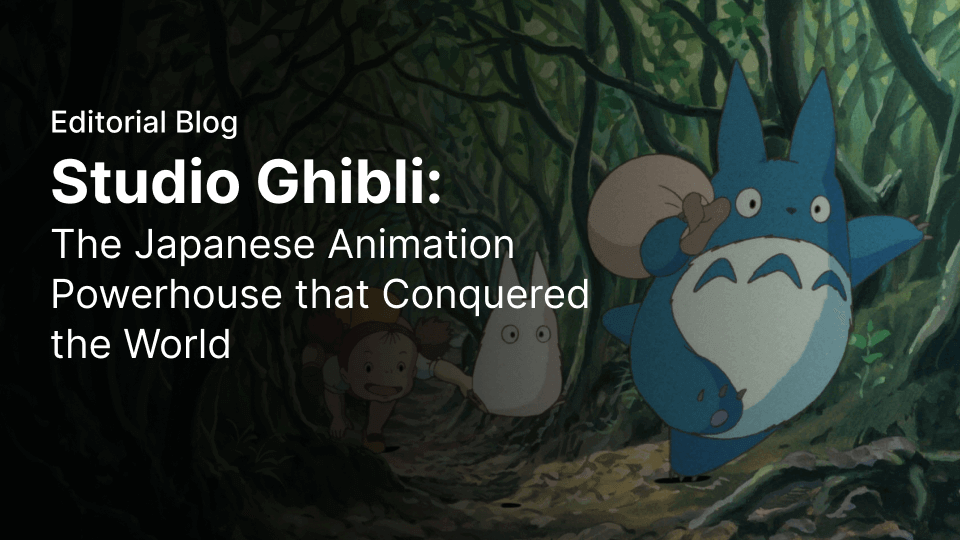
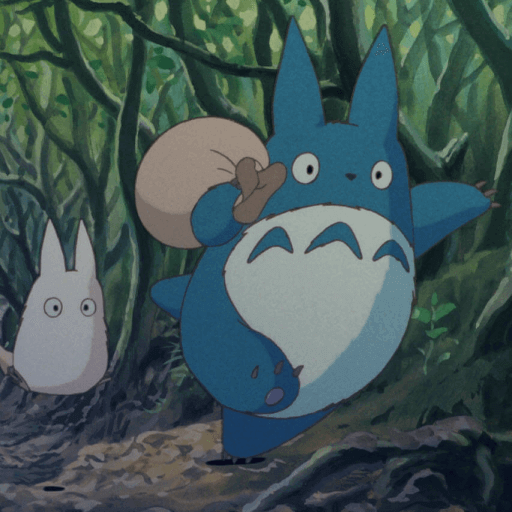
Jumpstart your ideas with Linearity Curve
Take your designs to the next level.
Share this!
Jonny Tiernan
Jonny is a contributing writer to the Linearity Blog.
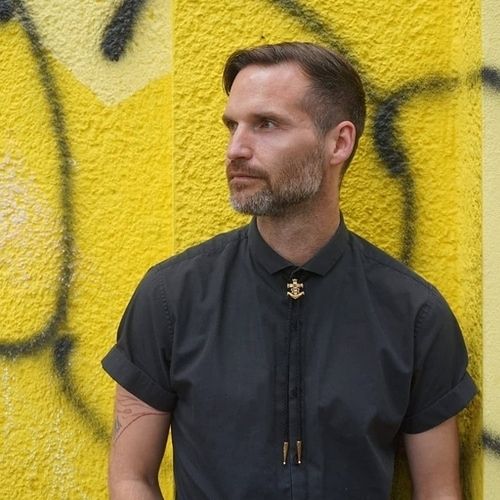

:quality(75))
:quality(75))



:quality(75))
